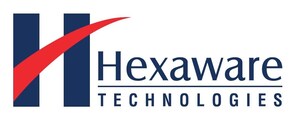Recruiter collaboration is the process of working together and sharing information among recruiters, hiring managers, and other stakeholders involved in the hiring process.
Effective client conversations contribute to customer satisfaction, loyalty, and long-term partnerships. It is important to approach these conversations with a customer-centric mindset.
One Stop CRM provides a centralized solution for managing all aspects of customer interactions, allowing businesses to streamline their operations, improve collaboration.
an in-built job portal provides companies with a convenient and efficient way to manage their recruitment efforts, from job posting to candidate selection, all within a single integrated system.
candidate profile management is crucial in efficiently managing candidate data and effectively evaluating applicants to identify the best talent for an organization's open positions.
GDPR(General Data Protection Regulation) has had a significant impact on data management practices, emphasizing the importance of lawful processing, transparency, data minimization.
Applicant tracking systems can improve the selection process by streamlining and automating many of the tasks involved in recruitment. For example, an ATS can automatically generate an email to applicants when they submit their resumes, as well as make notes on each candidate’s profile so recruiters can easily track their progress.
The system can also help screen applicants by checking for keywords in the resumes and cover letters that match the skills required for each job. This eliminates the need for manually sorting through hundreds of applications by hand. Finally, an ATS can also provide valuable analytics that allow recruiters to measure the effectiveness of their recruitment process. This information can be used to make adjustments to improve the efficiency and accuracy of future hiring processes
An ATSXTRA can help reduce the time to hire in several ways. Firstly, an ATSXTRA automates and streamlines the recruitment process, eliminating manual tasks and saving time. By automating tasks like resume screening and interview scheduling, employers can process applications more efficiently and move candidates through the hiring stages at a faster pace.
ATSXTRA also facilitates improved collaboration and communication among hiring teams and stakeholders. It allows for easy sharing and access to candidate information, enabling faster decision-making and reducing delays in the hiring process.
Furthermore, an ATSXTRA provides data and analytics that offer insights into the effectiveness of the recruitment process. By analyzing metrics like time-to-fill and identifying bottlenecks or areas for improvement, employers can optimize their hiring strategies to expedite the overall process.
Finally, by automating candidate communication, an ATSXTRA improves the candidate experience by providing timely updates and feedback. This reduces the likelihood of losing qualified candidates due to lengthy and unresponsive hiring processes.
In summary, an ATSXTRA reduces time to hire by automating processes, optimizing decision-making, providing data-driven insights, and enhancing the candidate experience.
An ATSXTRA can help employers in several ways:
An ATSXTRA can help eliminate or minimize the occurrence of duplicate resumes or CVs in the recruitment process. Here's how ATSXTRA helps with managing duplicate CVs:
An ATSXTRA assists in candidate screening by automating the process of resume parsing, filtering, and ranking candidates against predefined criteria or keywords. The software collects, stores, and reviews resumes, and tracks a candidate's status in the hiring process.
Here are some specific ways an ATS assists in candidate screening:

Operation Manager

PHP Developer

CEO

CTO

UI-UX Developer

Web Designer

PHP Developer

CEO, Sugar rush Company
"I've had the pleasure of collaborating with Atsxtra for several years now, and they consistently exceed our expectations. Their exceptional customer service, attention to detail, and commitment to delivering results have made them an indispensable part of our success."

Director, ADLEF Company
"We've been with Atsxtra for several years, and they continue to impress us with their professionalism and results-driven approach. Their ability to adapt to our evolving needs has been instrumental in our growth and success. Working with Atsxtra is like having a trusted partner by our side."

Director, TGC Company
"I can confidently say that Atsxtra sets the gold standard for excellence. Their team's attention to detail, quick response times, and strategic insights have given us a competitive edge. We're proud to be associated with Atsxtra and look forward to achieving even greater milestones together."








